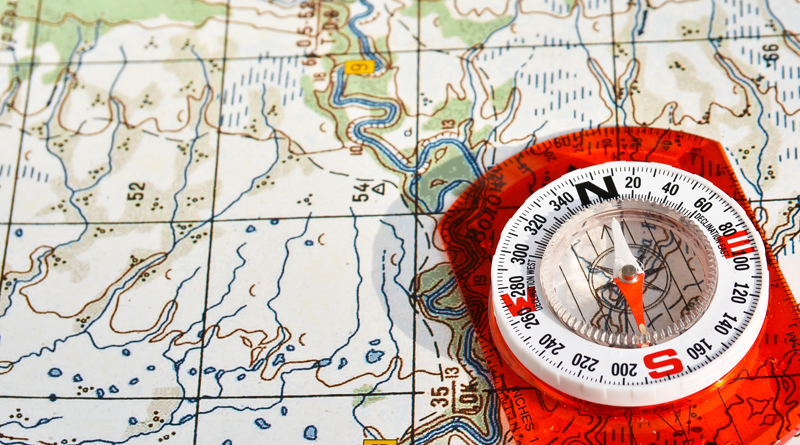Group Embraces Orienteering
By Deborah Jeanne Sergeant
To Peter Dady, 66, orienteering is not just a walk in the woods. The Cortland resident and semi-retired book salesman is a member of Central New York Orienteering Club (http://cnyo.us.orienteering.org). The group travels to various sites in the area to engage in a hobby that’s gaining traction in the region.
Although multi-generational — the group has members of all ages —about half the group of 200 is 55 and older.
“I think people do it if they like to run and do physical activity, but there’s also the thinking part of it, ‘cunning running’ I like to call it,” Dady said. “You have to think about where you’re going to find the next control point. There’s more mental exercise.”
Participants use specific orienteering-style maps that offer enhanced topographical features to help them navigate from their starting point to a designated destination.
“Our maps are more detailed than topographic maps,” Dady said. “We spend a lot of time on the map because the sport is about maps and compass. Once you learn what the map is telling you, you can navigate through the woods a lot easier.”
Orienteering enthusiasts from all over the world use the same type of maps.
Unlike geocaching, which relies upon GPS technology to find a token “treasure,” orienteering is old school in its navigation and offers no prizes. The participants must employ their sense of direction, map reading abilities and decision making skills to efficiently complete the course and find the control flags. Most are two to three feet in the air, so by mid-summer, they’re harder to see than in early spring.
“We do it in the winter on cross-country skis,” Dady said. “We’ve also had canoe and bicycle orienteering. We’ve done it at night. There’s a lot of ways you can do your activity.”
Dady insists orienteering is easy for anyone to learn, since most orienteering clubs offer instruction, especially to people new to the activity, and because most people have already done orienteering without realizing it.
“If you’re walking around the State Fair with a map trying to find what you want to see, that’s a form of orienteering,” he said.
Clubs also vary the maps and courses to include beginner-level participants with flags to signal control points, for example.
“We keep it to the trails so you can read the trail networks and learn topography of the land,” Dady said. “As you progress, we put the control flags farther off the trail. For those who are advanced, the flags are mostly in the woods, not necessarily on a trail all the time. That’s where your compass comes into play.”
Participants might search for a lone pine tree or a boulder as the control point.
He views orienteering as a good way to unplug, get in the woods and exercise both body and brain. While a younger person may relish tackling a challenging terrain, an older person may want to use strategy to find a way around the rough spot. Either can enjoy the sport using his particular abilities.
The club provides maps for orienteering at places like Beaver Lake Nature Center in Baldwinsville, Camp Hollis in Oswego and Highland Forest in Fabius. Occasionally, they navigate in urban venues, like downtown Syracuse, looking for specific points of interest and monuments.

